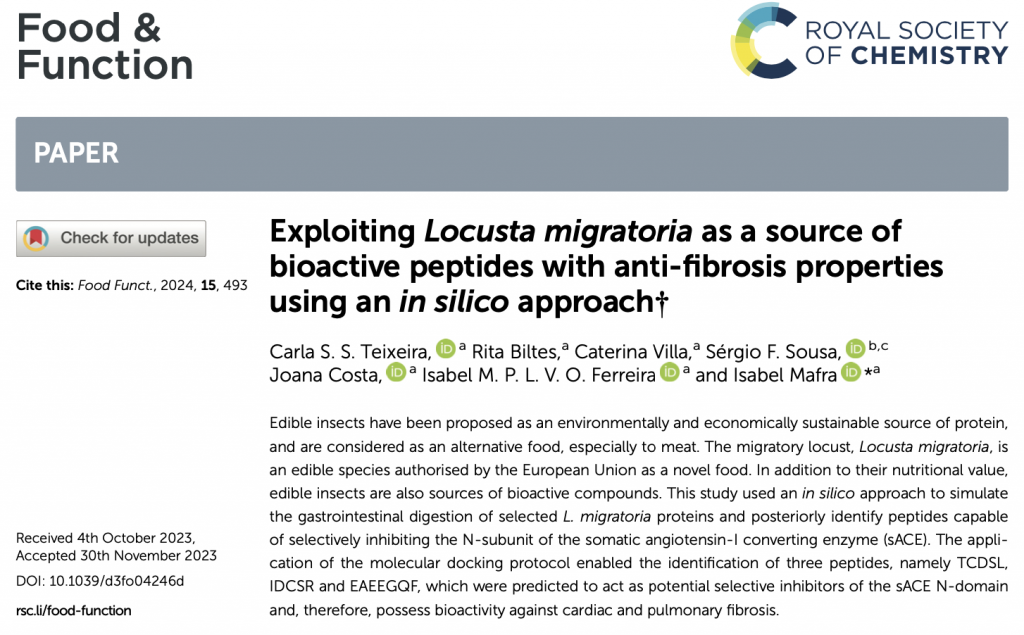Please check our recent collaborative research paper published in Food & Function (6.10), a collaboration with the research group of Prof Isabel Ferreira and Prof. Isabel Mafra (REQUIMTE/LAQV – FFUP). This study focused on the human digestion of proteins from the insect Locusta migratoria (migratory locust) and on the identification of peptides derived from this process with potential bioactive properties with anti-fibrosis properties.
Exploiting Locusta migratoria as a source of bioactive peptides with anti-fibrosis properties using an in silico approach
Carla S.S. Teixeira, Rita Biltes, Caterina Villa, Sérgio F. Sousa, Joana Costa, Isabel M.P.L.V.O. Ferreira, Isabel Mafra
Food & Function (2024) | DOI: 10.1039/D3FO04246D
Abstract
Edible insects have been proposed as an environmentally and economically sustainable source of protein, and are considered as an alternative food, especially to meat. The migratory locust, Locusta migratoria, is an edible species authorised by the European Union as a novel food. In addition to their nutritional value, edible insects are also sources of bioactive compounds. This study used an in silico approach to simulate the gastrointestinal digestion of selected L. migratoria proteins and posteriorly identify peptides capable of selectively inhibiting the N-subunit of the somatic angiotensin-I converting enzyme (sACE). The application of the molecular docking protocol enabled the identification of three peptides, namely TCDSL, IDCSR and EAEEGQF, which were predicted to act as potential selective inhibitors of the sACE N-domain and, therefore, possess bioactivity against cardiac and pulmonary fibrosis.

